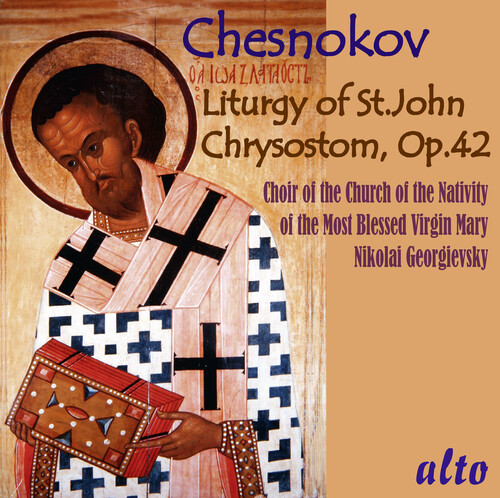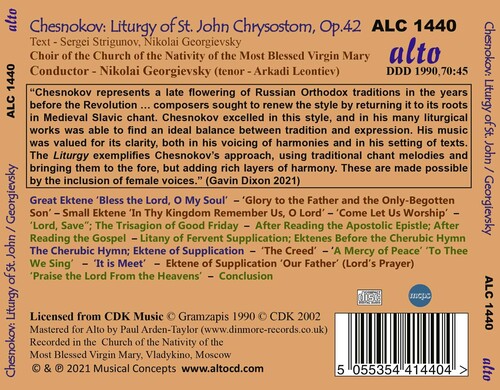Show results for
Deals
- Blu-ray Outlet
- New Release 4K
- New Release Blu-ray
- New Release DVD
- New Release Gifts
- New Release Music
- New Release Vinyl
- Top Seller 4K
- Top Seller Blu ray
- Top Seller DVD
- Top Seller Vinyl
- top sellers all movies
- top sellers all music
- Top Selling Gifts
- TV Outlet
- Top Seller Music
- DVD Outlet
- In Stock Outlet
- Music Outlet

Chesnokov: Liturgy of St.John Chrysostom Op.42
- Format: CD
- Release Date: 11/06/2021
Chesnokov: Liturgy of St.John Chrysostom Op.42
- Artist: Nikolai Georgievsky
- Label: Alto
- Genre: Classical, Classical Vocal Crossover
- UPC: 5055354414404
Product Notes
"Chesnokov represents a late flowering of Russian Orthodox traditions in the years before the Revolution... composers sought to renew the style by returning it to it's roots in Medieval Slavic chant. Chesnokov excelled in this style, and in his many liturgical works was able to find an ideal balance between tradition and expression. His music was valued for it's clarity, both in his voicing of harmonies and in his setting of texts. The Liturgy exemplifies Chesnokov's approach, using traditional chant melodies and bringing them to the fore, but adding rich layers of harmony. These are made possible by the inclusion of female voices." (Gavin Dixon 2021)





